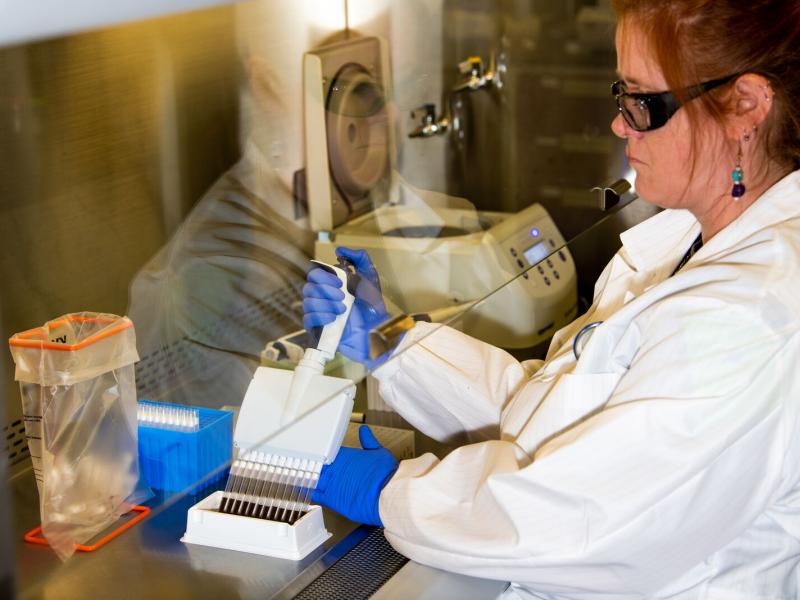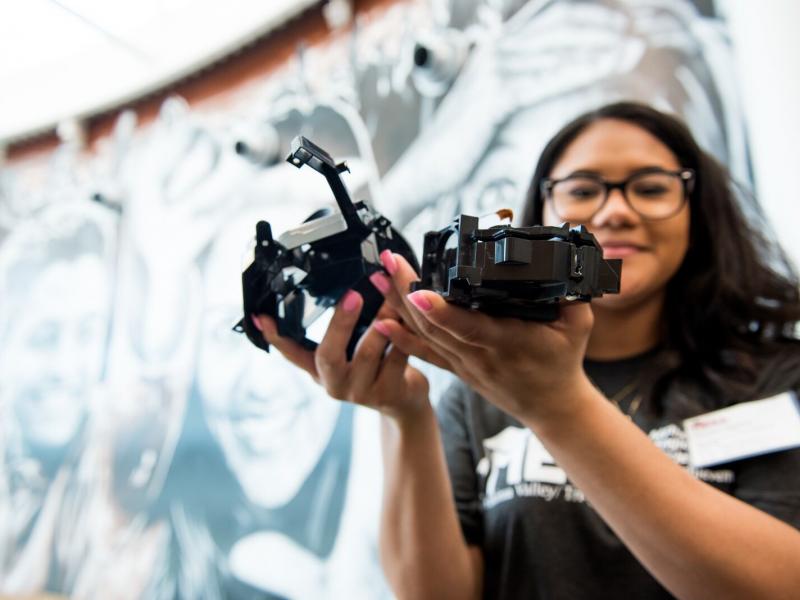PNNL Delivers Science and Technology for a Better Tomorrow

PNNL supports treaty verification and nuclear nonproliferation, including this research by physicist Sivanandan (Hari) Harilal, who is using lasers for remote isotope sensing.
(Photo by Andrea Starr | Pacific Northwest National Laboratory)
Abraham Lincoln once said, “The best way to predict your future is to create it.” At the Department of Energy’s Pacific Northwest National Laboratory, our 5,000 bright and talented staff members focus their expertise and ingenuity on creating a future that will be cleaner, safer and more prosperous.
From advancing scientific discoveries to enabling sustainable energy and enhancing national security, PNNL is committed to addressing critical national and global challenges. We have a history of anticipating our sponsors’ needs and exceeding their expectations. Building on those successes, PNNL is well positioned to support the new administration’s priorities, especially in clean energy innovation and climate change mitigation.
In the area of clean energy, our research focuses on decarbonizing the energy system—from developing renewable alternatives to fossil fuels, to increasing energy efficiency and advancing nuclear energy and carbon capture. PNNL scientists are also advancing energy storage for electric vehicles and the power grid. Two new facilities will enhance our capabilities and facilitate collaborations: the Energy Sciences Center, opening later this year, and the Grid Storage Launchpad, with groundbreaking planned for 2022.
PNNL is embracing the president’s goal for the U.S. to achieve net-zero emissions by 2050. We are developing plans to transform our campus into the first net-zero national laboratory with the help of new technologies, energy-efficiency measures and increased renewable energy.
The future of our planet may depend on predicting and mitigating climate change. PNNL scientists conduct research that deepens our understanding of key biological and environmental processes, and they use this new knowledge to model Earth systems from the molecular to global scales. They also explore the impact of energy production and land-use practices on the climate. Their research will inform science-based solutions and policies.
As I think about progress, I cannot ignore COVID-19. Many of us continue to worry about our health, the economy and remote learning. I am proud of our staff’s dedication to one another and our community. I am appreciative of the essential workers who keep our campus safe and secure, and I am grateful to the IT professionals who deployed technologies that allow us to stay productive.

It is rewarding and encouraging to see PNNL’s capabilities playing a role in advancing approaches to diagnose, treat and prevent COVID-19. Over the last year, PNNL applied its biology and biodefense capabilities to better understand the virus, help validate test kits and map protein structures for potential therapeutics. As part of the National Virtual Biotechnology Laboratory—a consortium of DOE national laboratories—we shaped near-term responses to COVID-19 and are conducting longer-term research and development.
PNNL continues to make contributions related to national security and the environment. Our nuclear nonproliferation programs originated during the Manhattan Project and involve partner nations in detecting the “undetectable” and stopping the trafficking of nuclear material. Our experts help these nations equip, train and sustain their nuclear and radiological security capabilities—shifting from in-person programs to virtual ones during the pandemic.
Locally, our science and technology continue to support Hanford cleanup efforts. Our researchers study contaminants and their behavior, evaluate remediation approaches and provide technical support related to waste treatment processes and operations.
Looking ahead, we must ensure PNNL and the nation have the diverse, prepared workforce we need. We partner with the community and region to advance science, technology, engineering and mathematics education by providing hands-on, experiential learning opportunities. Together, we are finding creative ways to excite and engage students with a focus on those who are underserved.

I certainly can’t predict the future, but I know that PNNL and our amazing people are working to create one that is better for everyone. The work they do today will have an impact for generations to come.
Steven Ashby, director of Pacific Northwest National Laboratory, writes this column monthly. To read previous Director's Columns, visit pnnl.gov/news and filter by Director's Columns in our Latest Stories.
Published: April 30, 2021